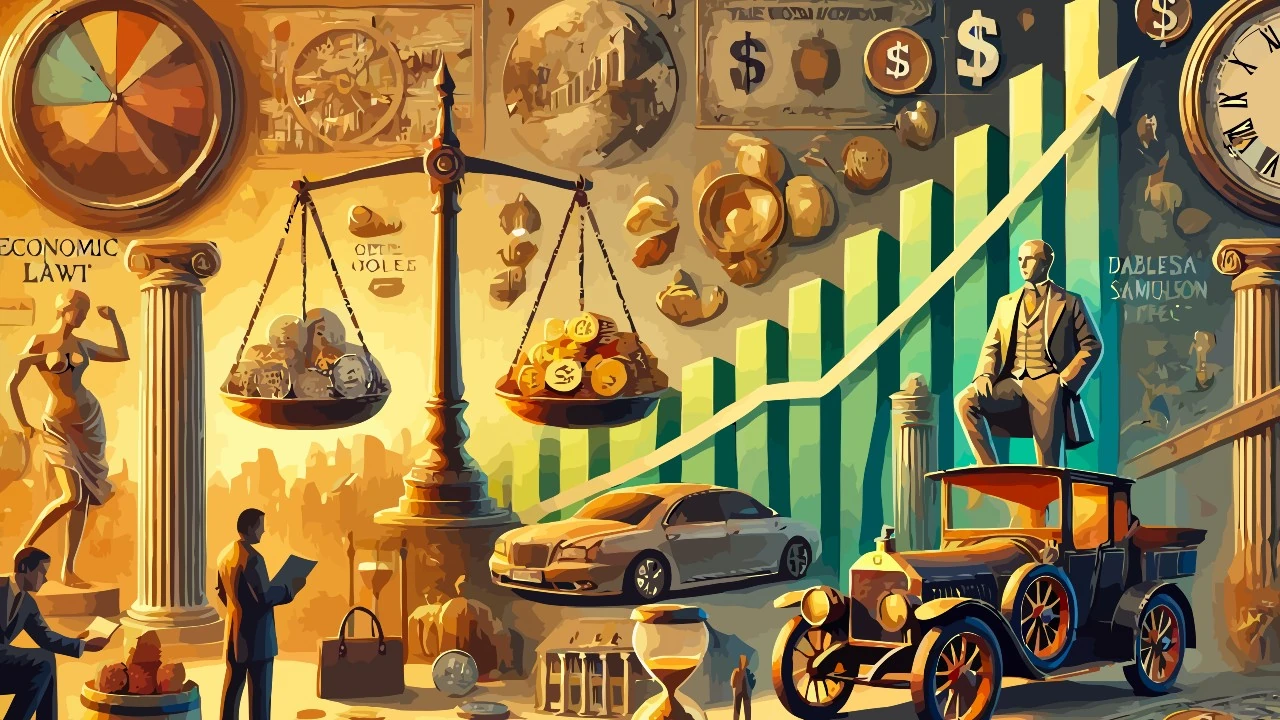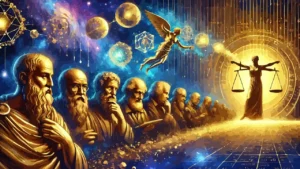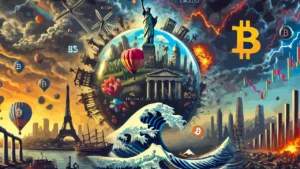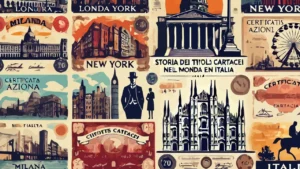The economy is made up of complex dynamics that often manifest themselves through specific effects that influence the choices of individuals, businesses and governments. Some of these effects are well known among economists and investors, while others remain less evident but equally decisive in our daily lives.
From the Cantillon Effect, which explains how the distribution of money affects the economy, to the Gresham Effect, which describes the phenomenon whereby bad money drives out good money, many of these phenomena shape markets and human behavior. Let’s explore some of the most famous economic effects and their real-world impact.
Contents
- The Cantillon effect – Who gains and loses from issuing money
- The Gresham effect – Bad money drives out good money
- The Hotelling rule – Why we spend the less valuable goods first
- The wealth effect – The link between the stock market and consumption
- The Pigou effect – Purchasing power and the price level
- The Jevons effect – Efficiency and paradoxical consumption
- The Diderot effect – Cascading consumption and economic choices
- The Veblen effect – Conspicuous consumption and social status
- The Balassa-Samuelson effect – Price differences between countries
#1. The Cantillon effect
Who gains and loses from issuing money
Richard Cantillon, an 18th-century economist, observed that the injection of new money into the economy is not neutral. Those who receive the money first (such as banks, businesses, or governments) can spend it before prices rise, benefiting from greater purchasing power. In contrast, those who receive the money last (such as workers or pensioners) face rising prices without a proportional increase in their income.
A historical case in point is the hyperinflation in Germany in the 1920s, when the uncontrolled issuance of marks by the Weimar Republic initially benefited financial institutions and industries, while workers saw their purchasing power rapidly collapse. This led to serious social unrest and laid the groundwork for the rise of political extremist movements.
#2. The Gresham effect
Bad money drives out good money
English economist and merchant Thomas Gresham formulated a fundamental principle of monetary theory: bad money drives out good money. This effect occurs when two types of money with equal nominal values but different intrinsic values circulate at the same time. People will tend to spend the less valuable money (bad money) and hold on to the more valuable money (good money), causing it to disappear from circulation.
A recent historical example is the use of the silver pound in England in the 16th century: over time, coins with less silver remained in circulation while the more valuable ones were hoarded or melted down. This phenomenon was also observed in other contexts, such as the circulation of gold coins over banknotes during monetary crises.
#3. The Hotelling rule
Why we spend the less valuable goods first
Mathematician and economist Harold Hotelling formulated a principle according to which people tend to consume the least valuable goods first, saving the most valuable ones for the future. This behavior, also known as Hotelling’s Rule, is observable in many areas, from food management to financial investments.
An example of this is the management of gold reserves by central banks, which often sell less valuable assets before touching their gold reserves, which are considered a store of value of last resort. This principle has also been applied in the oil sector, where the least productive deposits are exploited first before accessing higher quality reserves.
#4. The wealth effect
The link between the stock market and consumption
The Wealth Effect, theorized by economist Arthur Cecil Pigou, describes how an increase in the value of financial assets leads consumers to feel richer and to increase their propensity to spend, even if their income has not changed. Conversely, a decrease in the value of assets causes a reduction in spending, with possible recessionary effects.
A historical case is the US stock market boom of the 1990s, driven by the explosion of the technology sector. The increase in stock prices encouraged many investors to spend more, fueling economic growth. However, the bursting of the dot-com bubble in the early 2000s demonstrated how the wealth effect can quickly reverse, leading to a decline in consumption and a recession.
#5. The Pigou effect
Purchasing power and the price level
The same economist Arthur Pigou observed that the price level affects the purchasing power of money, conditioning economic choices. If prices fall (deflation), the real value of wealth increases, incentivizing spending. If, on the other hand, prices rise too quickly (inflation), purchasing power is reduced, with negative effects on consumption.
An example is the Great Depression of 1929: prices fell, increasing the real value of money, but fear of the crisis pushed people to save rather than spend. The result was a worsening of the recession. In Japan, in the 1990s, a prolonged period of deflation had similar effects, with economic stagnation lasting over a decade.
#6. The Jevons effect
Efficiency and paradoxical consumption
The Jevons paradox, formulated by British economist William Stanley Jevons in the 19th century, holds that an increase in the efficiency of using a resource often leads to an increase in its consumption rather than a reduction.
The best-known historical example is the use of coal in industrial England: with the invention of more efficient steam engines, the cost of energy fell, leading to increased use of coal rather than a reduction in its consumption. This same principle is observed today with energy efficiency: fuel-efficient automobiles can lead to an overall increase in car use, canceling out the environmental benefits.
#7. The Diderot effect
Cascading consumption and economic choices
Denis Diderot, an 18th-century philosopher, described a phenomenon now known as the Diderot Effect: the purchase of a good of higher value can trigger a chain of new purchases, driven by the need to maintain a certain aesthetic or qualitative standard.
Diderot himself recounted how, after receiving a luxurious robe as a gift, he felt compelled to replace the rest of his furniture to match his new image. This effect can be observed today in modern consumption: the purchase of a new smartphone can lead to the purchase of expensive accessories or the updating of other technological devices, creating a vicious cycle of expenditure.
#8. The Veblen effect
Conspicuous consumption and social status
Economist Thorstein Veblen described the phenomenon of conspicuous consumption, in which some goods increase in demand precisely because they have a high price. People buy these goods not out of necessity, but to demonstrate their social status.
A classic example is that of the Hermès Birkin handbag: their exorbitant price and the difficulty of purchasing have made them objects of desire among the elite. The higher the price, the higher the demand remains among those who want to show off their wealth. The same phenomenon is observed in the markets for luxury cars, designer watches and works of art.
#9. The Balassa-Samuelson effect
Price differences between countries
Economists Béla Balassa and Paul Samuelson explained why prices in developed countries are higher than in emerging countries. This is because in countries with high industrial productivity, wages rise rapidly and the prices of goods and services also tend to rise.
A historical example is the comparison between Switzerland and Thailand: in Zurich, a coffee can cost five times more than in Bangkok, not because it is of superior quality, but because Swiss salaries are much higher. This phenomenon explains why, even with a favorable exchange rate, living in industrialized countries is always more expensive than in developing economies.







Leave a Reply